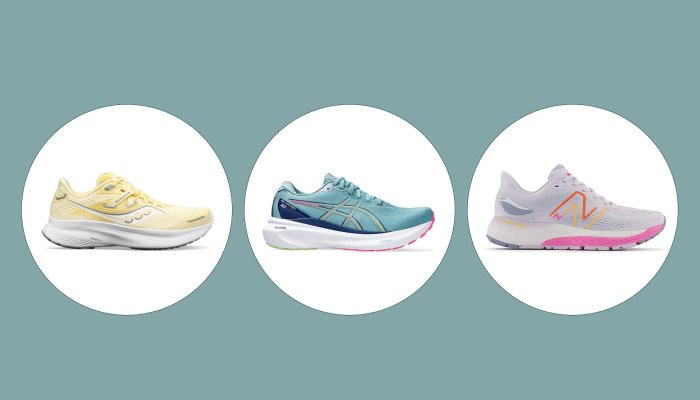
High arches can impact your ability to run any amount of distance regularly in many ways that impact performance and comfort.
“Since less weight is transferred through the midfoot with high arches, there is greater stress in the forefoot causing pain syndromes,” Kornfeld says. “There are also patients who have an overly tight calf that can create stress on the achilles tendon and many have very short or tight plantar fascia that can also become stressed and painful.”
Here are a few other ways that having high arches impact running:
Less shock absorption: With higher arches, there is less natural shock absorption when the foot strikes the ground. This can lead to a higher risk of stress fractures, shin splints, and other overuse injuries, as the impact forces are not adequately absorbed.
Less natural pronation: Pronation is the natural inward rolling of the foot during the gait cycle, which helps with shock absorption and weight distribution. High arches often lead to underpronation (supination), where the foot doesn’t roll inward enough. This can result in an uneven distribution of pressure, leading to discomfort and potential injuries.
Poor stability: High-arched feet are generally less stable than those with normal arches. Runners with high arches may have difficulty maintaining balance and stability, increasing the risk of ankle sprains and falls during their runs.
Limited flexibility: High arches can result in reduced flexibility in the foot’s midsection, making it challenging to adapt to uneven terrain or absorb shock effectively. This can lead to a less efficient and more uncomfortable running experience.
“The majority of high-arched patients have a more rigid structure to their feet,” says Kornfeld. “Rigid-type feet are generally less capable of absorbing stresses, as it’s difficult for the foot to share and properly distribute weight.”
To mitigate the impact of high arches on running, individuals with this foot type should consider wearing running shoes designed specifically for high arches, that provide the necessary support and cushioning. We always recommend consulting with a podiatrist for a thorough evaluation to address any specific issues related to high arches and running.










